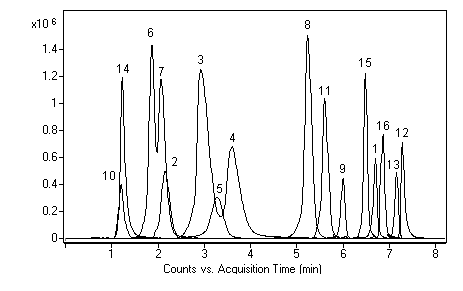Heroin, MDMA, Morphine, Hydromorphone and 6-MAM Analyzed with LCMS
Analysis of Drugs of Abuse encompasses a wide variety of compounds, including controlled substances, prescription drugs, and even over-the-counter formulations. These drugs can be problematic to analyze due to several problems.
First, many have similar structures (e.g. morphine and hydromorphone), making adequate selectivity difficult to obtain in a chromatographic separation.
Second, a good number of these contain amine functionalities (MDMA, Heroin, etc.) which can present peak shape issues. Basic molecules can sometimes interact with residual Silanols on the Column, resulting in Peak Tailing.
Finally, the range of Polarity encountered in a Plasma or Urine Sample may require one Column for reversed Phase and another for the Polar Drugs of Abuse.
Columns based on Cogent TYPE-C Silica™ can address these issues and each Column can be used in either the Reversed Phase or Aqueous Normal Phase (ANP) mode to Retain compounds of a wide Polarity range. Hence, one Column can be used where ordinarily two may be required. Along these lines, the versatility of Retention mode means that superior Selectivity may be achieved; if two compounds co-elute in Reversed Phase, an ANP approach may be able to Separate them. As for problems associated with Peak Tailing, the TYPE-C Silica™ Columns can be advantageous here too. The stationary phase surface is virtually free of silanols, which means Peak Tailing with basic compounds is reduced.
Here, we investigated the use of different Cogent TYPE-C Silica™ Columns for the analysis of various drugs of abuse. In addition to standard separations, urine and plasma-based samples were also analyzed. For Full Details, Download the Extended Application Note below.
Attachment
No 333 Advantage of Using Cogent TYPE-C Columns for Drugs of Abuse pdf 0.9 Mb Download File



